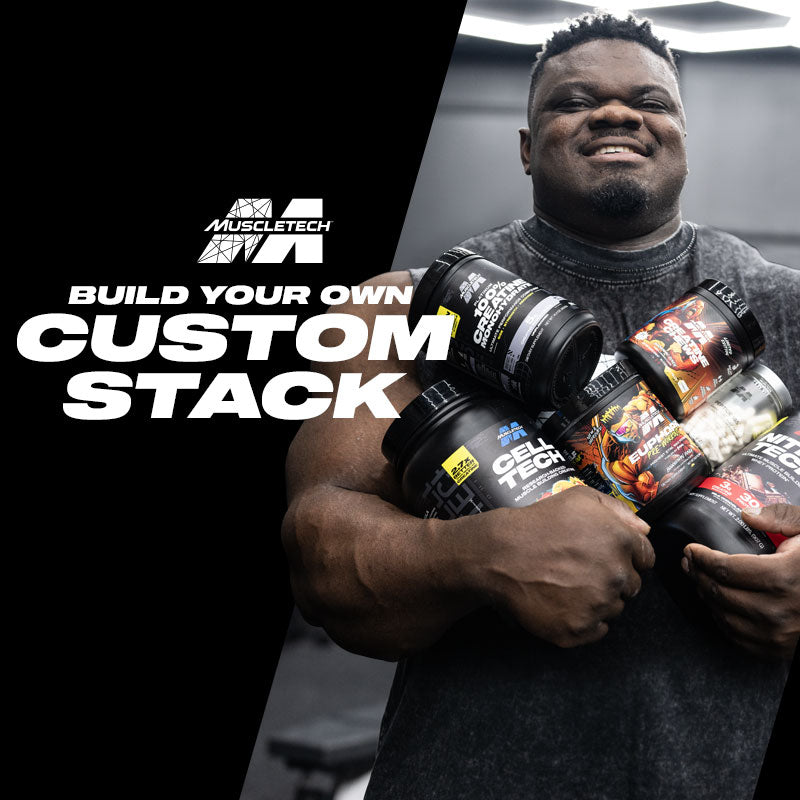You’re here because you’re passionate about being fit and working out. With that in mind, you’ve probably heard of creatine, one of the most popular supplements in the world of fitness.
Creatine is known for its performance-enhancing capability. In fact, more than 28 percent of athletes globally reap the benefits of it, and most of them are men. The supplement has been proven to enhance muscle growth, and there has been extensive research in regard to its performance advantage.
Now here’s the thing: Despite being a popular supplement, many people still don’t know how to take creatine, how much to take, and how often to take it!
But what if I told you that you’re just underestimating the supplement and there’s still time to clarify all the misconstrued things about taking it? Intrigued? Keep on reading.
Table of content
The Best Time to take Creatine
Let’s start with the best time to take the supplement. Although it seems intuitive to take creatine before working out, it’s actually after working out that seems to be the consensus best time to take it for best results.
In fact, a 2013 study found that taking creatine monohydrate led to twice the lean muscle in those using it immediately after training compared to those using creatine before training. The advantages didn’t just apply to muscle gains; that same group also lost more fat than the pre-workout group even though everyone was doing the same workout.
A more recent meta-analysis confirmed creatine supplementation immediately after resistance training was superior for increasing muscle mass compared to creatine supplementation immediately before resistance.
Although the meta-analysis didn’t provide a firm rationale for why creatine works better when taken after working out, there are a number of theories why, such as because of an increase in GLUT4 translocation and expression or because of the post-workout muscle pump being able to more effectively deliver nutrients to the muscles.
Another way to take creatine is during rest days. But for this period, make sure that you consume it when you eat carbohydrates. This will help you maximize insulin as a creatine transporter into muscle cells, maximizing the advantages creatine brings, especially when you did high-intensity activities all throughout the week.
Also Read: How Much Water Should I Drink While Taking Creatine?
The Do’s and Don’ts of Creatine
Just like any other workout supplement, it’s important to know the dos and don’ts of creatine to ensure safe and effective usage.
Do: Start with the loading phase
The purpose of taking creatine in supplement form is to increase how long the phosphagen energy system can function by saturating creatine stores in your muscles. In short, creatine works to boost your training when your muscles are fully saturated with it. Not saturated?
Don’t expect optimal results. There are, therefore, two popular strategies for fully saturating your muscles with creatine: the loading strategy (5 days of 25 grams per day) and the daily low-dose strategy (28 days of 3 grams per day).
So which should you choose? The volume of research on creatine is vast, but most researchers agree that loading creatine is an effective way to get the most from it almost right away. To maximize the gains from the supplement quickly, it’s recommended to follow a loading phase initially, where higher doses are taken for a short period to saturate the muscles with creatine.
Also Read: The Ultimate Guide to Volume Eating
For instance, the phase includes taking 20 to 25 grams a day of creatine for 5 to 7 days. You may accomplish this by ingesting 5 grams of the supplement in doses spread throughout the day.
Regardless of what method you choose, once you’ve loaded up, whether it be in 5 days or 28 days, you simply need to take 3 to 5 grams per day to maintain full muscle cell capacity.
Shop for Protein Powder with Creatine
Don’t: Take as much as you want
Many people believe that you can treat creatine as a monohydrate drink because it can give you lean muscles in much less time. This is false. Keep in mind that taking more than the recommended dosage won’t provide additional benefits. Once your muscles are saturated, you only need to take 3 to 5 grams per day to maintain that.
Also Read: How to Train Like an Athlete?
Do: Drink water and hydrate well
Creatine monohydrate draws water into your muscles, so it’s crucial to stay properly hydrated while taking this supplement. Make sure to drink at least 8 to 10 glasses of water per day to maintain optimal hydration levels.
Do: Mix your creatine fully and consume it immediately
Mix your creatine fully. Use enough water with your creatine so that it’s fully dissolved and consume it immediately. Try to avoid leaving it out for hours, as over time, creatine in water will break down in a by-product called creatinine, which doesn’t have any ergogenic effect (it’s a waste!).
Also Read: Exploring the Effects of Mixing Creatine and Alcohol
Don’t: Neglect a high-quality diet
Like any supplement, creatine must be used in conjunction with an intense and well-rounded training program along with a high-quality diet to achieve optimal results. If you’re a newbie, know that a balanced diet means eating for your goals and that means high-quality, nutrient-dense foods that fuel muscle growth and recovery.
Don’t: Drink alcohol
One important don’t is to consume alcohol while taking creatine. Yes, I know, that’s a little sad. And although it may be tempting to enjoy a drink or two, alcohol can negatively affect the effectiveness of creatine and potentially even counteract its benefits.
The most particular effect of drinking alcohol during your creatine consumption is dehydration. If you take creatine with alcohol, more water will be drawn into your body cells, which may cause the latter to retain more water than usual, thus leading to dehydration.
In addition to the hydration-depleting effects, alcohol is a non-nutritive calorie source that can interfere with the body’s natural energy systems, leading to decreased performance and delayed recovery, negating two of the greatest benefits that creatine is supposed to offer.
But hey, if you’re fitness-inclined and serious about your healthy journey, saying no to alcoholic beverages should be easy, right?
Don’t: “Cycle” Creatine
Our bodies don’t get used to creatine, nor do we build a tolerance to creatine, so there’s no case to be made for cycling it. Yes, you can reap the benefits of this well-researched and widely used supplement year-round.
Tracking Your Progress and Evaluating the Impact of Creatine on Your Gains
Your primary goal when taking creatine is to see muscle gains and improved endurance, and without tracking your progress and evaluating the impact of the supplement, you’re simply wasting time, effort, and money. Here’s how you can track your progress about the impact of creatine on your body.
1. Using a workout journal
Record your sets, reps, and weights for each exercise, and make note of any changes you experience in strength, endurance, or muscle size. By documenting these details, you’ll have a clear picture of how creatine is influencing your performance over time.
2. Measuring body composition
Before you even start taking creatine, consider measuring your body composition, and keep doing it at regular intervals thereafter. That way, you’ll be able to see if there are any noticeable changes in your physique as a result of the supplement. Body compositions measure your weight, body fat percentage, and muscle measurements.
3. Monitoring personal records
This is particularly true for bodybuilders and powerlifters. Keep a record of your personal bests in different exercises, such as bench press, squat, or deadlift. As you continue taking creatine, pay attention to whether you’re able to surpass these PRs or set new records. If yes, congratulations! You have an improvement in your strength and performance, thanks to creatine and your hard work (mostly). By the way, have you ever heard of the bulking season?
4. Listen to your body
I think this is the most important part of your healthy journey. Listening to your body means paying attention to how you feel during your workouts. Are you able to push through intense training sessions with more energy and focus? Do you notice quicker recovery times between workouts? Learn your objectives and provide personal and valuable insights into your overall training and creatine experience.
Read about bodybuilding for beginners.
Keep in mind that everyone’s response to creatine consumption is different. It’s important to give yourself some time to see the effects and track your progress to make informed decisions about whether it’s best to continue taking the supplement or not.
Do you know that you can take creatine even as a woman? Here are the best 5 creatine options for women.
Final thoughts
Knowing the best practices and dos and don’ts can make a significant difference in maximizing the benefits of creatine supplementation. Remember, timing is key when it comes to taking creatine, and following the guidelines mentioned in this blog will ensure you optimize its effectiveness.
Read Our Top Read Content:








